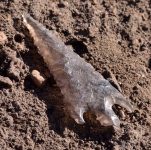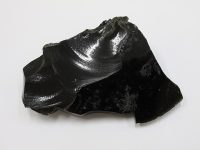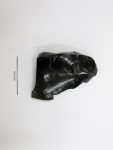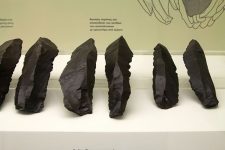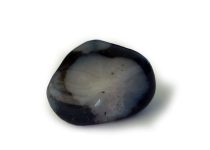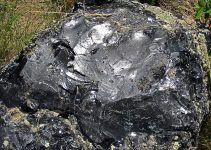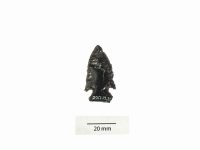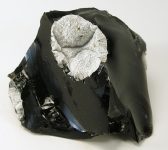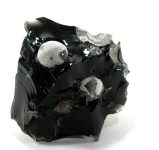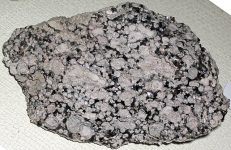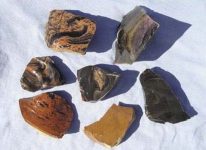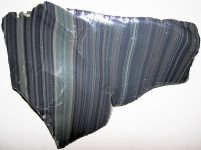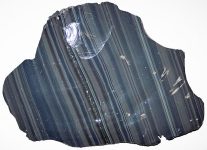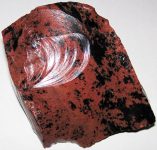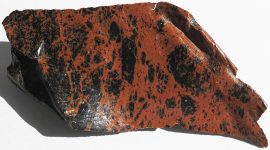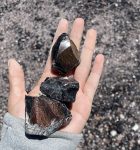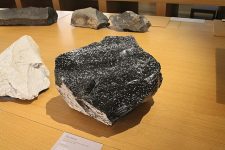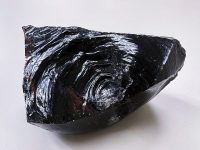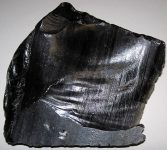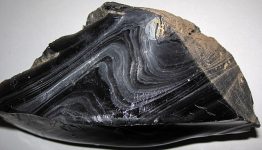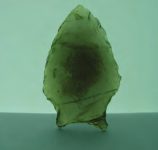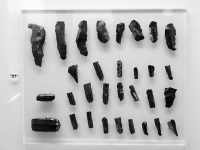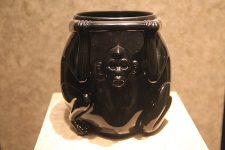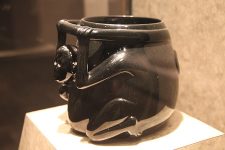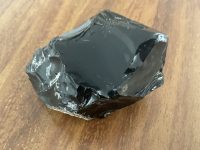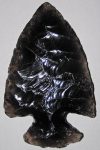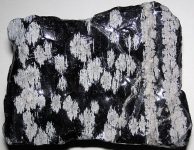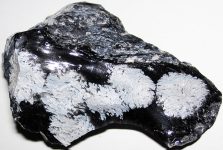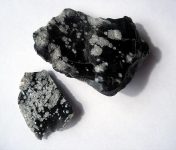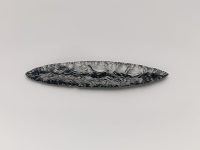Obsidian
ABOUT OBSIDIAN
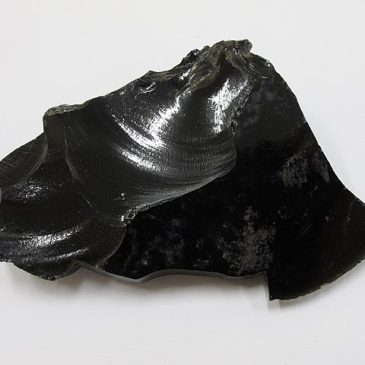
Obsidian is a naturally occurring volcanic glass, formed from the rapid cooling of molten lava. Known for its sharp edges and glassy luster, obsidian has been utilized and admired by various cultures throughout history for its beauty, practicality, and perceived mystical properties
Mining: Obsidian is typically collected from volcanic regions where it has naturally formed. The collection process usually involves surface mining and manual extraction of the glassy rocks.
Processing: Once collected, obsidian is cut, shaped, and polished to enhance its natural beauty. Its sharp edges are carefully handled to create smooth, finished products.
CHARACTERISTICS
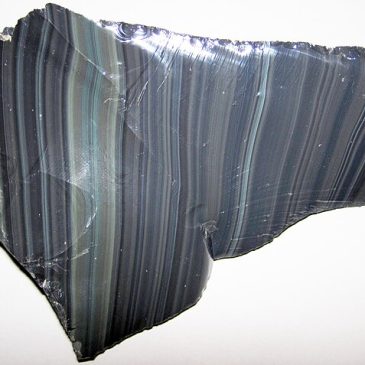
Color: Obsidian is typically black but can also be dark brown, green, or gray. Variants like snowflake obsidian (with white splotches), rainbow obsidian (with iridescent colors), and mahogany obsidian (with reddish-brown streaks) are also well-known.
Chemical Composition: Obsidian is primarily composed of silicon dioxide (SiO₂), similar to quartz, but in an amorphous glassy form without a crystalline structure.
Density: Obsidian has a density of about 2.35-2.60 g/cm³.
Luster: Obsidian exhibits a glassy (vitreous) luster.
Hardness: On the Mohs scale, obsidian has a hardness of 5-5.5, making it relatively hard but still prone to breaking with sharp edges.
Transparency: Obsidian is usually opaque, but thin slices can be translucent.
HISTORY AND LORE
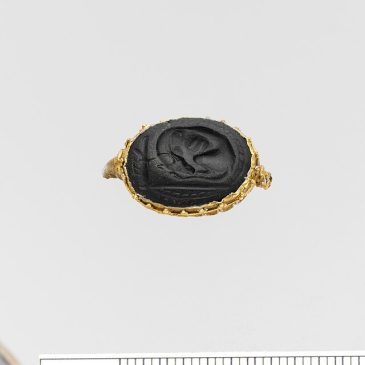
Ancient Use: Obsidian has been used since prehistoric times for making tools, weapons, and ornaments due to its sharp edges when fractured. Ancient civilizations, such as the Aztecs and Mayans, crafted obsidian blades and arrowheads.
Middle Ages: During the Middle Ages, obsidian continued to be used for decorative and practical items. It was also believed to have protective properties and was often used in amulets.
Modern Era: Today, obsidian is popular in jewelry, decorative objects, and metaphysical practices.
SOURCES
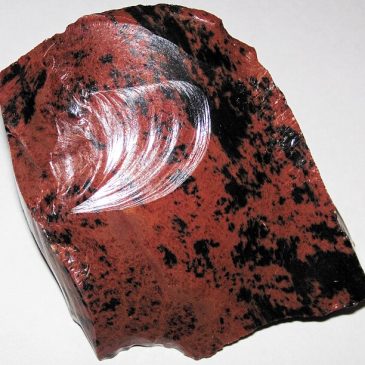
Geographical Locations: Major sources of obsidian include volcanic regions in the United States (particularly the western states), Mexico, Italy, Iceland, Japan, and Armenia.
Geological Formation: Obsidian forms from the rapid cooling of felsic lava extruded from a volcano. The rapid cooling prevents the formation of a crystalline structure, resulting in the glassy texture of obsidian.
USES
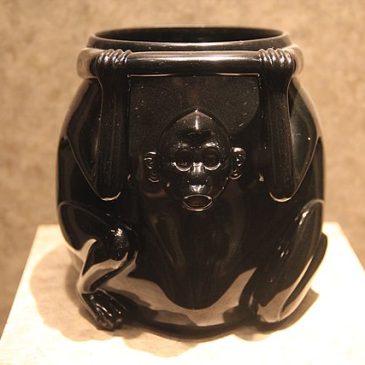
Jewelry: Obsidian is used in jewelry, often cut into cabochons, beads, and pendants. Its glossy finish and dark color make it a striking addition to various jewelry pieces.
Tools and Weapons: Historically, obsidian was used to make sharp-edged tools and weapons, such as knives, arrowheads, and spear points. Its ability to fracture into extremely sharp edges made it highly valued for cutting and scraping.
Decorative Objects: Obsidian is crafted into a variety of decorative items, including figurines, spheres, and ornamental carvings. Its sleek appearance adds a modern touch to home decor.
Metaphysical Uses: In metaphysical practices, obsidian is believed to have grounding and protective properties. It is used in meditation, healing, and energy work to dispel negativity and promote clarity.
METAPHYSICAL PROPERTIES
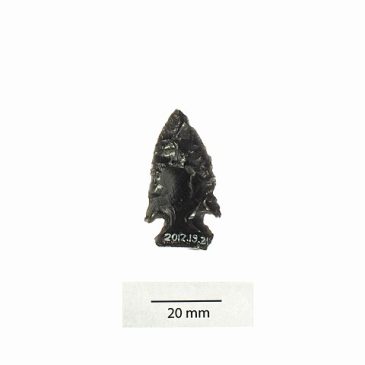
Symbol of Protection and Grounding: Obsidian is often associated with protection, grounding, and the absorption of negative energies. It is considered a powerful stone for emotional and spiritual healing.
Historical Significance: The use of obsidian in ancient tools and artifacts highlights its cultural and historical importance across various civilizations.
